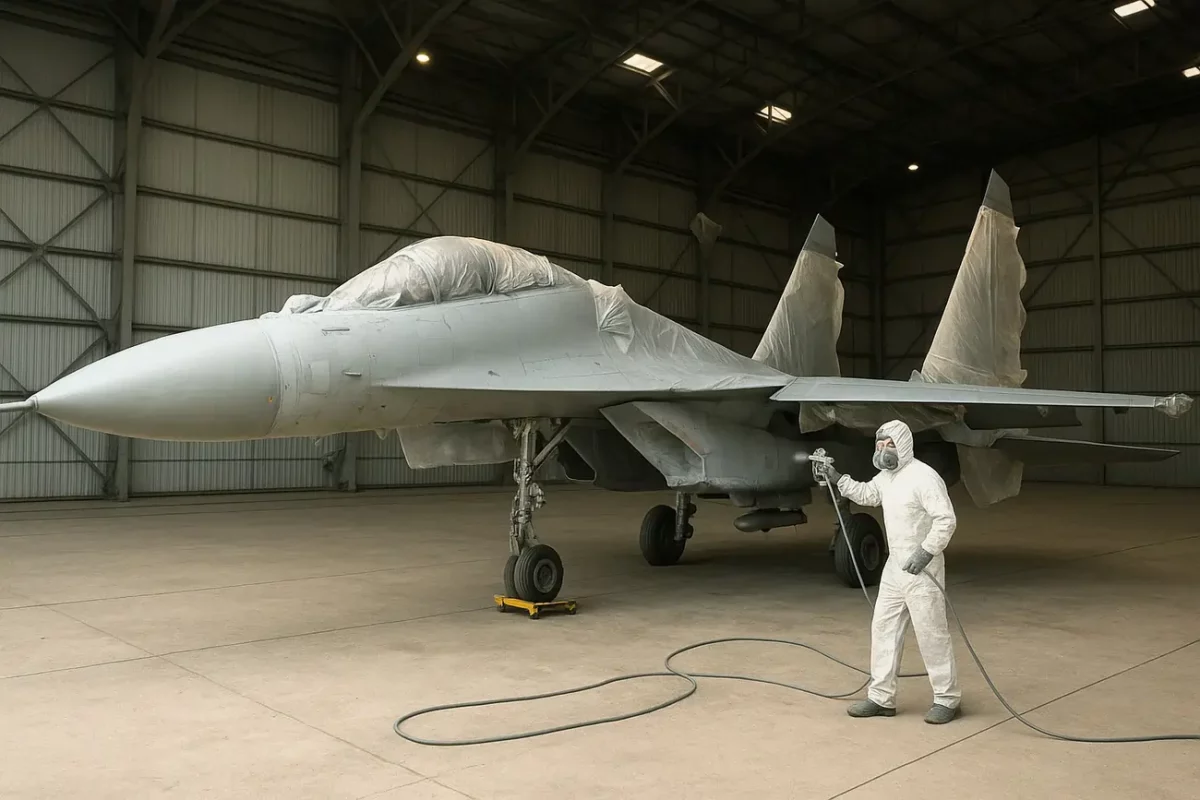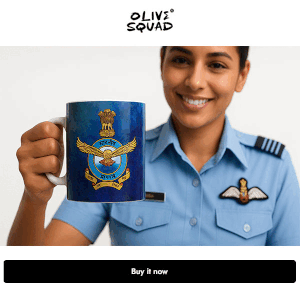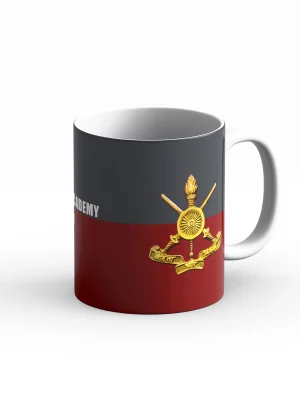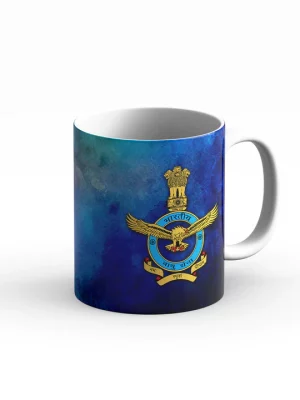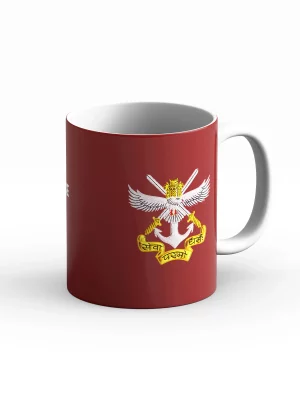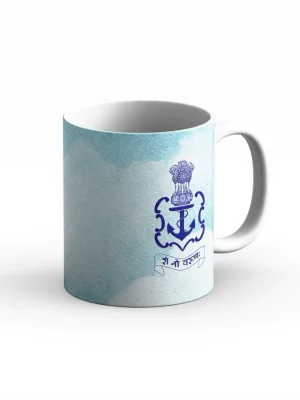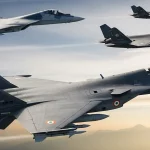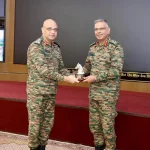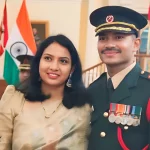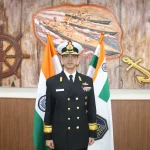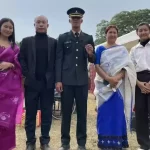The practice of painting fighter jets grey represents a fascinating intersection of military strategy, technological innovation, and historical adaptation. At its core, this choice stems from the fundamental need to evade detection in an increasingly sophisticated battlefield, where visual, radar, and thermal signatures can mean the difference between mission success and failure. Over the decades, grey has emerged as the go-to color for most air forces worldwide, but its dominance is the result of trial, error, and evolution through major conflicts and technological leaps.
To understand why grey prevails, it’s essential to trace the history of aircraft camouflage. In the early days of military aviation during World War I, aircraft were often left unpainted or coated in bright colors to denote national allegiance or even personal flair think of Manfred von Richthofen’s infamous red Fokker Dr.I, the “Red Baron,” which served as much for intimidation as identification.
Also Read: What Fuel Do Fighter Jets Use and How Much Does 1 Litre Cost?
However, as aerial warfare intensified, the vulnerability of such visible targets became apparent. French forces pioneered camouflage with light blue-grey on fighter jets like the Nieuport 11, while Germans experimented with lozenge patterns in multiple colors, including greys, to disrupt outlines and blend with the environment. British aircraft used protective dopes like PC.10 (a khaki-green) for UV resistance, which inadvertently provided some camouflage. By the war’s end, grey shades were recognized for their ability to merge with hazy skies, setting a precedent for future designs.
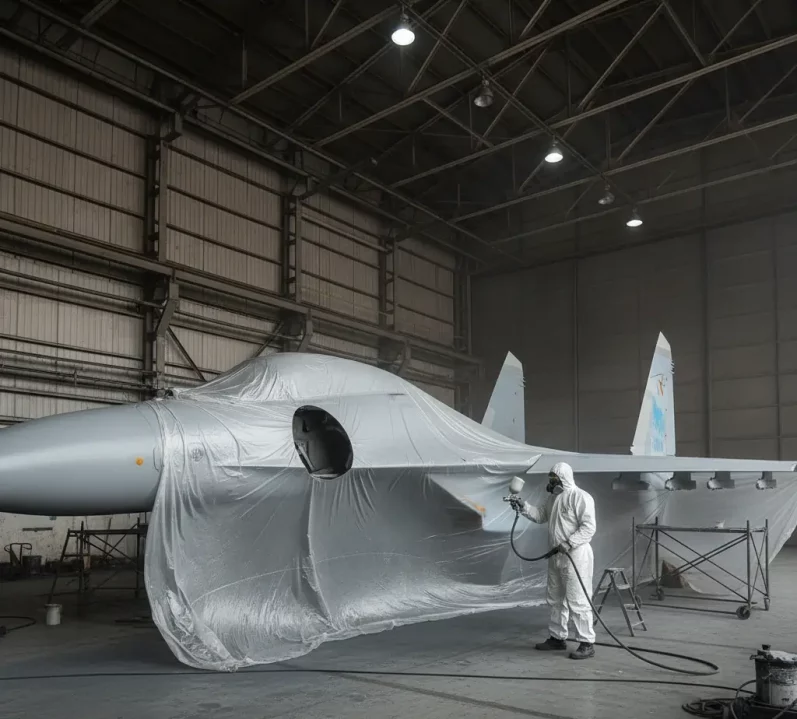
World War II accelerated this shift, as aircraft reached higher altitudes and speeds, rendering ground-based camouflage like greens and browns ineffective. Early RAF fighter jets featured “Dark Earth” and “Dark Green” topsides with “Sky” undersides, but these appeared too dark against lighter skies. Adjustments led to “Ocean Grey” and “Medium Sea Grey,” which better matched cloud cover and reduced silhouettes from below.
The Luftwaffe employed light blue undersides with greens above, but Mediterranean operations introduced sand yellows and olives, highlighting grey’s limitations in diverse theaters yet its versatility shone in European skies. U.S. forces started with olive drab over neutral grey, but by 1943, trials with all-grey schemes on reconnaissance Mosquitos proved superior for high-level operations. This era also saw innovations like countershading, where gradients of grey created optical illusions to flatten the aircraft’s appearance.
Post-WWII conflicts, such as Korea and Vietnam, further refined grey’s role. High-flying jets like the MiG-21 used green patterns for ground concealment, but air-superiority fighter jets increasingly favored uniform greys to blend with atmospheric haze. The Cold War introduced anti-flash white for nuclear bombers like RAF V-bombers, but low-level strike aircraft reverted to camouflage. By the 1970s and 1980s, with the advent of stealth technology, grey evolved beyond mere visual camouflage. Aircraft like the F-117 Nighthawk and later the F-22 Raptor incorporated radar-absorbent materials (RAM) into their grey coatings often ferrimagnetic paints with iron or carbon particles that scatter radar waves, reducing the radar cross-section (RCS). These paints not only absorb electromagnetic energy but convert it to heat, minimizing returns to enemy sensors. While black was used for night stealth (e.g., the F-117’s “Black Jet”), grey proved more adaptable for daytime and multi-role missions, balancing visual and electronic stealth.
The advantages of grey extend to practical and scientific realms. Visually, it exploits human perception: at distance, grey merges with the average sky luminance, especially under overcast conditions or at dawn/dusk. Studies from WWII onwards showed that grey reduces detection range by up to 20-30% compared to darker colors. Thermally, matte grey finishes absorb less solar radiation than blacks or whites, preventing cockpit overheating and material fatigue during supersonic flights critical for jets operating in hot climates. It also minimizes glare, which could otherwise reflect sunlight and betray position. In terms of adaptability, a single grey scheme suffices for global deployments, unlike terrain-specific camos (e.g., desert tan for Middle East operations or arctic white), reducing logistics costs. Modern digital camouflage, seen on jets like the Russian Su-57 or Slovak MiG-29, uses pixelated greys for enhanced disruption at varying distances.
Despite its prevalence, grey isn’t universal. Aggressor squadrons, like the U.S. Navy’s “Top Gun” units, paint jets in enemy-inspired schemes (e.g., Russian blues or Chinese greens) for realistic training. Some air forces experiment with blues for naval operations or multispectral coatings that counter infrared detection. Debates persist: critics argue grey favors air-to-air over ground-attack roles, where disruptive patterns might excel, and environmental factors like pollution can alter effectiveness. Nonetheless, standards like the U.S. MIL-STD-2161 emphasize low-observability greys for tactical aircraft.
Looking ahead, as unmanned aerial vehicles (UAVs) and hypersonic jets rise, grey may integrate with adaptive materials paints that change hue via electrochromics or nanomaterials for real-time camouflage. Yet, with Identification Friend or Foe (IFF) systems handling recognition, the trend toward unmarked or low-key greys underscores a shift from visual flair to functional invisibility.
| Aspect | Historical Schemes | Modern Grey Advantages | Examples |
|---|---|---|---|
| Visual Camouflage | WWI: Lozenge patterns in greens/browns/greys | Blends with sky/haze; reduces silhouette | F-16, Su-35 |
| Radar/Stealth | WWII: Basic matte finishes | RAM-embedded paints absorb waves | F-35, F-22 |
| Thermal Management | Early: No focus | Low solar absorption; anti-glare | High-altitude jets like MiG-31 |
| Adaptability | Theater-specific (e.g., desert sand) | Universal for multi-role ops | Global fleets like USAF |
| Maintenance | Frequent repaints | Economical, durable | Reduced downtime in conflicts |

